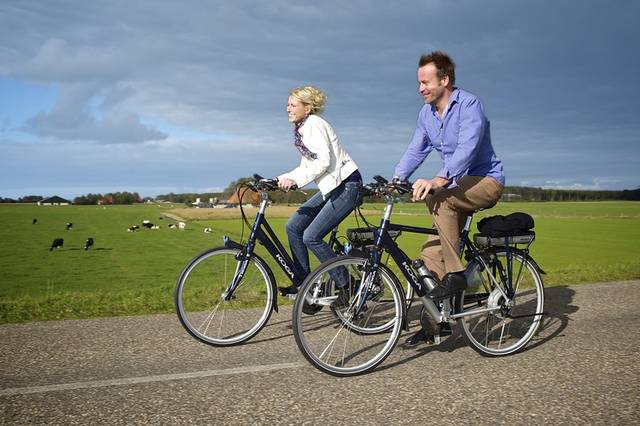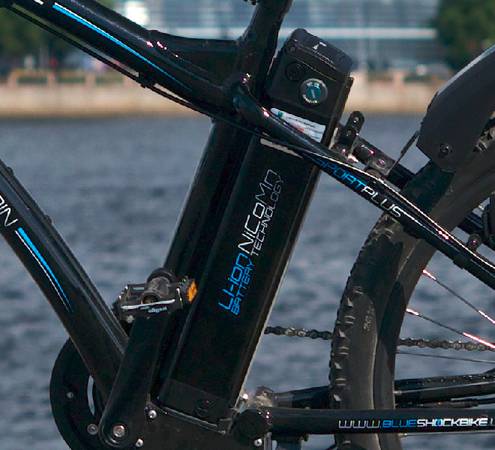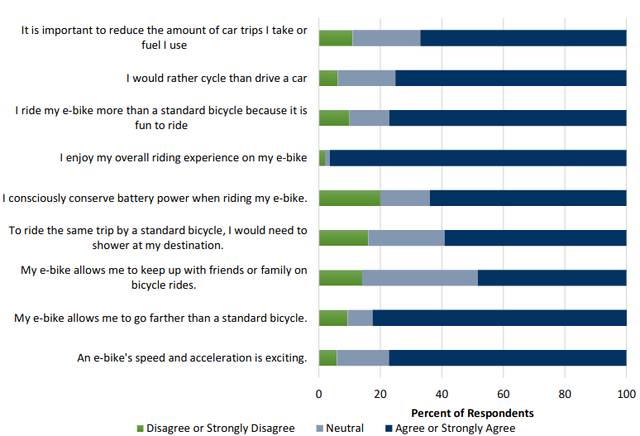As the alternative transportation sector becomes more popular, electric bikes are quickly becoming one of the most preferred options—and for good reason.
Electric biking can offer a green, cost-effective form of travel that is also incredibly efficient while allowing you to explore and enjoy your surroundings with ease.
But before you jump on an e-bike, it’s important to understand what this type of transportation brings to the table and any potential drawbacks that could come along with it.
This blog post will provide an in-depth look at the pros and cons of electric biking so you can make an informed decision about whether or not this mode of transport is right for you.
Pros of Electric Bikes
1. Cheap Transportation – Electric bikes are a great way to save both money and time! They offer an affordable alternative to cars, with no licenses or registrations required. Plus, the cost of recharging your battery is miniscule in comparison to public transit fares – on average 4 cents per charge versus costly gas prices.
2. Great Form of Exercise – Ebikes are a great solution for those who need to stay active but may not have the dedication or ability needed with an unpowered bike. With customizable assistance levels, riders can tailor their rides specifically to their health and fitness needs, making it easier than ever before for anyone- regardless of age or physical limitations -to enjoy time outdoors on two wheels!
3. Environmentally Friendly – E-bikes are one of the most eco-friendly ways to get around. Their lack of environmental impact sets them apart by providing an energy efficient and pollutant free alternative compared to traditional motorized vehicles or mass transit methods. Pedaling a bike with electric assistance, you can help minimize your carbon footprint while still getting from point A to B quickly and conveniently.
4. Almost Effortless Driving – Ebiking provides a low-impact, almost effortless way of getting around town. This type of transportation is noticeably less stressful than traditional driving, even when traffic conditions are sub-optimal. Portland University research revealed that electric bikes make people feel secure. So much so, in fact, 62% of e-bike owners replaced close rides on car with their electric bike.

5. You Don’t Sweat As Much – Tired of arriving at your destination hot, sweaty and uncomfortable after cycling? Consider using an electric bike to make daily commutes a breeze. Not only is it more energy efficient but also ensures you arrive looking (and feeling) fresh! In a recent report published by the National Institute For Transportation And Communities, the top three barriers to riding a bike are; hilly terrain, travel distance and getting gross sweating. With an electric motor doing most of the work for you, even long rides can be completed without having to break out into a sweat or elevate your heart rate too much.
6. Faster Than Conventional Bicycle – An electric bike can help you turn superhuman! With its max speed of 20-28 mph (32-45 kph), it’s faster than what most cyclists are able to do by themselves. Say goodbye to yawning your way through morning commutes and give yourself an extra boost with this eco-friendly superpower – get where you want in less than half the time, reveling in a newfound surge of energy all along the ride!
7. Less Regulation To Deal With – An electric bike offers a fantastic and stress-free way to get around! With no need for tedious paperwork, inspections or registration plus minimal legal regulation – it’s the perfect transportation solution. Plus you’ll have extra money in your pocket with zero gas costs to worry about. This makes the electric bike great for those who just want a quick and easy way to get around without having to navigate through a sea of paperwork!
8. Great for Hauling a Trailer – Meet the e-bike, your brand new ally for tackling mountainous loads! No sweat needed to ascend those steep slopes – just hop onto its powerful 750W motor and watch it take you up effortlessly. Packing a whopping 300 lbs on board? Not an issue; this reliable ride takes care of all that extra weight with ease. There are a variety of trailers made specifically to allow you to take advantage of this, from enclosed cargo trailers to kid trailers meant to ferry your little ones.

9. Easy to maintain and Charge – Electric bikes offer some distinct advantages in comparison to other means of transport. For one thing, electric bikes are extremely easy to maintain and charge. Their battery can be easily removed and charged virtually anywhere, making them a great option if you need to top up the power quickly. Additionally, electric bikes take about the same amount of maintenance as any other bike – much less than cars or motorbikes – so you don’t have to worry about too many regular trips to your mechanic.
10. Easy To Park and Store – With an electric bike, you won’t have to worry about parking your vehicle in a crowded city – it’s so much easier to carry on with your day. There’s no need for a garage or extended parking permits, so you can save some money on not having to pay for a designated spot. Finding a bike rack or post gives you the freedom to explore without worrying about finding and booking into costly parking lots. However, make sure it’s secured properly in case of any would-be opportunists looking for easy targets!
Read More: Best Electric Bike Under $1000 | Review & Comparison
Cons of Electric Bikes
1. Extra Weight – Electric bikes may offer the advantage of motorized assistance, but this comes with a downside – extra weight. Most models can weigh anywhere from 45-70 lb due to the bulk of their motors and batteries. This makes carrying up stairs or pedaling under your own power much more laborious than its traditional bike counterparts which typically range between 25 – 35 lb in weight.
2. Confusing Legal Status – Electric bikes are increasingly popular, but the law hasn’t quite kept up yet. Where you can ride an e-bike and what type of restrictions apply vary from location to location – some places limit them by wattage or speed while others classify electric bicycles as motorized vehicles entirely. In some places, you may not be allowed to ride on bike paths. While in others there is no such restriction, provided you ride within a reasonable speed limit. Before getting on your bike it’s important that you check which rules apply in your area so that there won’t be any surprises!
3. Significant Upfront Investment – When purchasing an electric bike, there’s no way around the fact that the upfront investment can be quite large. On average, prices of new e-bikes can range from under $750 to more than $10,000. This is definitely something to consider before investing in an electric bike as it can make a big difference in your budget. The good news, though, is that once you’ve put up the initial expense for purchasing an ebike, expenses for operating it are relatively low.

4. Target for Thieves – E-bikes are revolutionizing transportation, providing an economical and convenient way to get around. Unfortunately, their growing popularity has made them a prime target for thieves looking to make a fast buck off of stolen property. This leaves owners with no secure place where they’re comfortable leaving their bikes unattended or the battery unsecured due to its small size – making riders feel helpless against potential theft and ultimately fearful of riding altogether.
5. Short Range – For me, the single biggest downside to electric bikes is their limited range. Relying on the medium assist setting, I never get more than 40 miles out of a full charge – and that’s assuming I don’t have any extra weight on the bike. Even worse, if the battery dies during my ride, it’s virtually impossible to peddle with the added weight of the battery attached. Battery life usually lasts between 3-5 hours depending on my speed and terrain; however, this is simply not enough for an entire day out in the saddle. It’s fair to say that e-bikes can be great for commuters or leisure riders – but they’re simply not realistic solutions for bicycle tourists or couriers who are out riding all day long.
6. Slow Charge Speed – Forgetting to plug in your electric bike for a daily charge can be a terrifying prospect, indeed. Lithium ion batteries powering e-bikes need 3 to 6 hours to fully charge. While it may seem like a minor inconvenience, getting caught off guard by an empty battery means having to haul that otherwise heavy 50 lb frame up any hills you come across on your way to wherever the day takes you. The worst part of it all is forgetting to plug it in before leaving; if something interferes with your usual routine even once, you could find yourself in quite the pickle.

7. Lithium-ion Batteries Can Be Dangerous – E-bikes are a popular form of transport due to their Eco-friendliness, but they can be dangerous if mishandled. Lithium ion batteries have been known to re-ignite and traditional firefighting methods may not always suffice when dealing with these fires. Some cities combat this by using heavy precautions such as filling dumpsters with water or sand before disposing of the battery, however we still don’t have an effective way for capturing used lithium – making it difficult to maintain its environmental credentials.
8. Negative Stigma – Cyclists have a long way to go until they are viewed as being on par with automobile drivers. Unfortunately, for some people, any form of transportation other than a car is associated with lower income. This perception is further compounded by the false notions that electric bikes are for either lazy people or those who can no longer ride regular bicycles due to age or physical ability. Dismantling these misconceptions and rethinking how all types of transportation should be assessed and valued equally should be a priority if more people want to make cycling a viable option, regardless of their personal circumstances.
Different Types of Electric Bikes on the Market
When buying an e-bike, there are two main design decisions to consider: motor type and placement as well as battery size and location.
These elements can have a significant impact on your riding experience with each presenting its own unique pros and cons. Furthermore, the battery is arguably the most expensive component of any electric bicycle model so it’s important to make sure you select one that best fits your needs in terms of power output.
Pedal Assist (Pedelec) Vs Throttle Controlled E-Bikes
Class 1 Pedal Assist Electric Bike
Class 1 electric bikes offer a great way to get around town with pedal assistance. For those looking for an environmentally-friendly and exercise-filled ride, these eBikes are the perfect solution.
They provide power when you’re pedaling, but won’t take over on their own! Best of all, riders can legally take them anywhere bicycles may go – from bike lanes and roads to multi-use trails or exclusive paths.
Class 2 Throttle Controlled Electric Bike
Class 2 electric bikes offer an alternative to traditional bicycles and provide a convenient way of getting around.
The bike has its own power system, governed by either a twist-grip or button mounted on the handlebars – allowing riders choose how much assistance is needed while riding at speeds up to 20 mph.
These ‘e-bikes’ are growing in popularity across USA & Asia but remain prohibited in most countries within Europe due more stringent regulations regarding their safety and use.
Class 3 Speed Pedelec E-bikes
Class 3 electric bikes provide an exhilarating cycling experience, with the added advantage of Pedal Assist power.
With speeds reaching up to 28mph, they are faster than most traditional pedal assist models and can be used on roads or bike lanes.
However, before setting out on one of these high speed e-bikes it’s important to check local laws and regulations.
Due to their high speed capabilities, Class 3 electric bikes are often prohibited on certain trails and paths and may not be allowed in some areas.
Hub Motor Vs Mid Drive Electric Bikes
Mid Drive Electric Bikes
Mid-drive motors have become popular for their high performance and torque in ebike applications.
Rather than powering the wheel directly like a traditional hub motor, mid-drive motors are located at the center of the bike – between the pedals at the bottom bracket – and provide power through the bike’s drivetrain.
By driving the crank, instead of just turning the wheel, mid-drive motors can take full advantage of existing gears to multiply their power and enhance performance.
What’s more, they make maintenance and service simple due to their design. Thus, it is not all that surprising why mid-drive motors are now widely favoured over traditional hub motors in ebikes.
Hub Motor Electric Bikes
Hub motors provide a cost-effective and low maintenance electric bike solution, making them an ideal choice for entry level cyclists.
These motors are built into the hub of either the front or rear wheel, independently powering it as you ride without interfering with your drivetrain.
Furthermore they use cadence sensors to measure pedaling input rather than torque sensors which offer more consistent levels of help while biking.
Perfect for those who want to get started in cycling but need some additional assistance!

What Do You Wish You Knew Before You Bought Your E-bike?
All in all, our experience with buying an e-bike was a positive one, but if I had known a few things before we purchased it, the process would have been smoother.
When you are deciding between an e-bike and a standard bike, think about how far you will be travelling, how much you can afford to spend, if you have joint pain, what type of bike is more comfortable for you, how environmentally-friendly your choice will be, and familiarize yourself with local e-bike laws.
Additionally, don’t be afraid to invest a bit more upfront for a higher quality e-bike that will last longer; look into getting insurance and buy locally so that you can get the proper parts and service.
When deciding to ride in pairs, choose similar models and brands to ensure consistency. Otherwise, you may need to regret later, having different class of bikes with different top speed and assist level.
Finally, make sure to measure your leg inseam and understand the stand-over height of the bike before making a purchase. With these tips, you will be ready to enjoy your e-bike for many years!
Final Verdict: Are Electric Bikes Worth It?
Yes, Indeed. An electric bike offers a great deal of value to a person in need while for some it may be just a show-off out to the world, their boyfriend or girlfriend. So the real worth of your investment depends on your use!
So ask yourself whether you want something to save money? Do you want a vehicle that supports your active lifestyle? Something that is good for commuting? Do you need something for exercise? The questions may change from person to person so it’s better you ask yourself.
Rest assured an electric bike will add value to your life with better acceleration, zero-emission, fuel economy, lower cost, futuristic, and vibration free-riding experience.
So keep riding, explore more, and lead this revolution against fossil fuels and don’t forget to let us know what you like or dislike the most about e-bikes.
Also Read,
Should I Buy an Electric Bicycle? Are Electric Bike Worth It
Is Ride1Up a Good E-Bike Brand? Know This Before Buying!
How Much Do Electric Bikes Cost? | Over 300 E-Bikes Compared
Are Chinese Electric Bikes Any Good? Here’s What We Discovered









Thank you for sharing